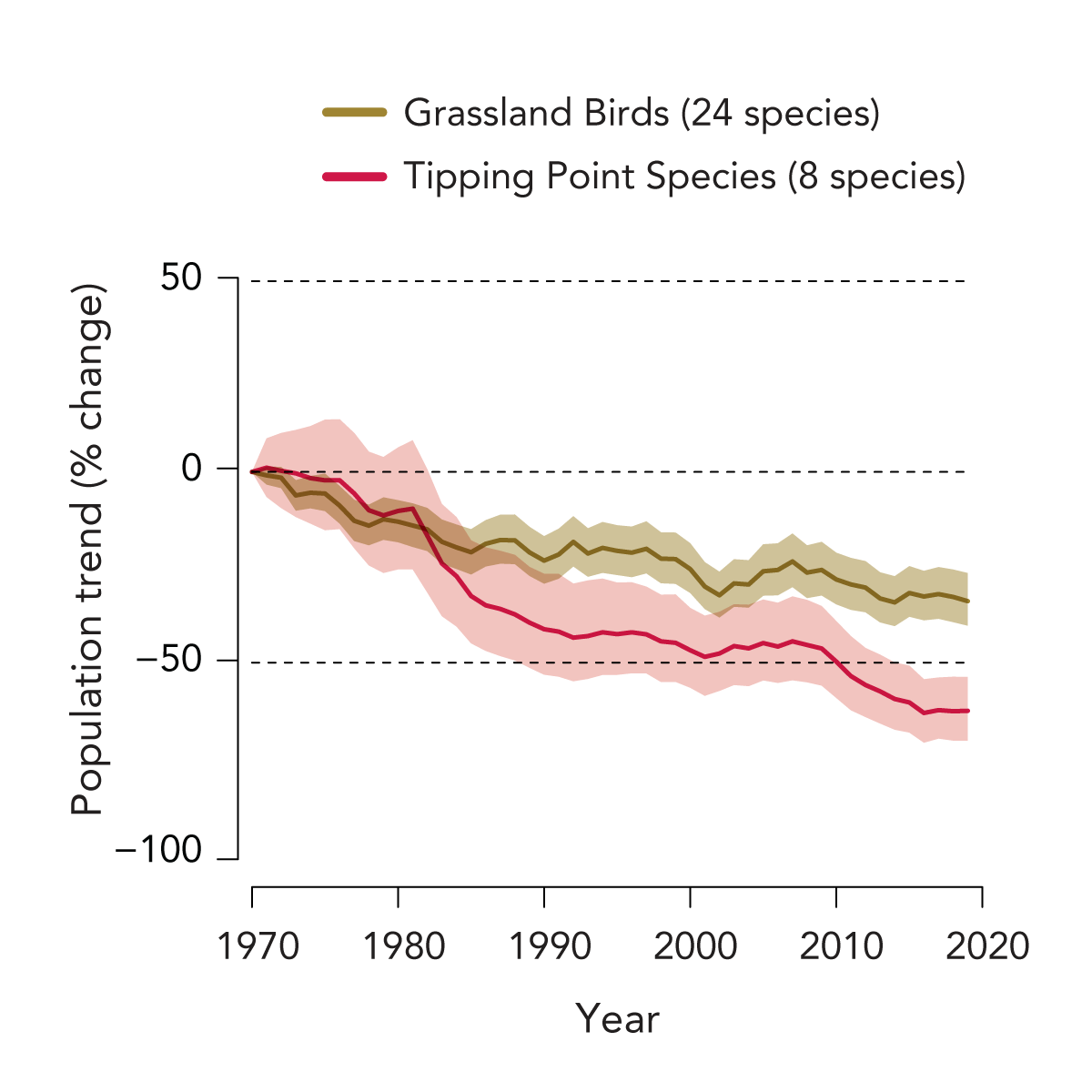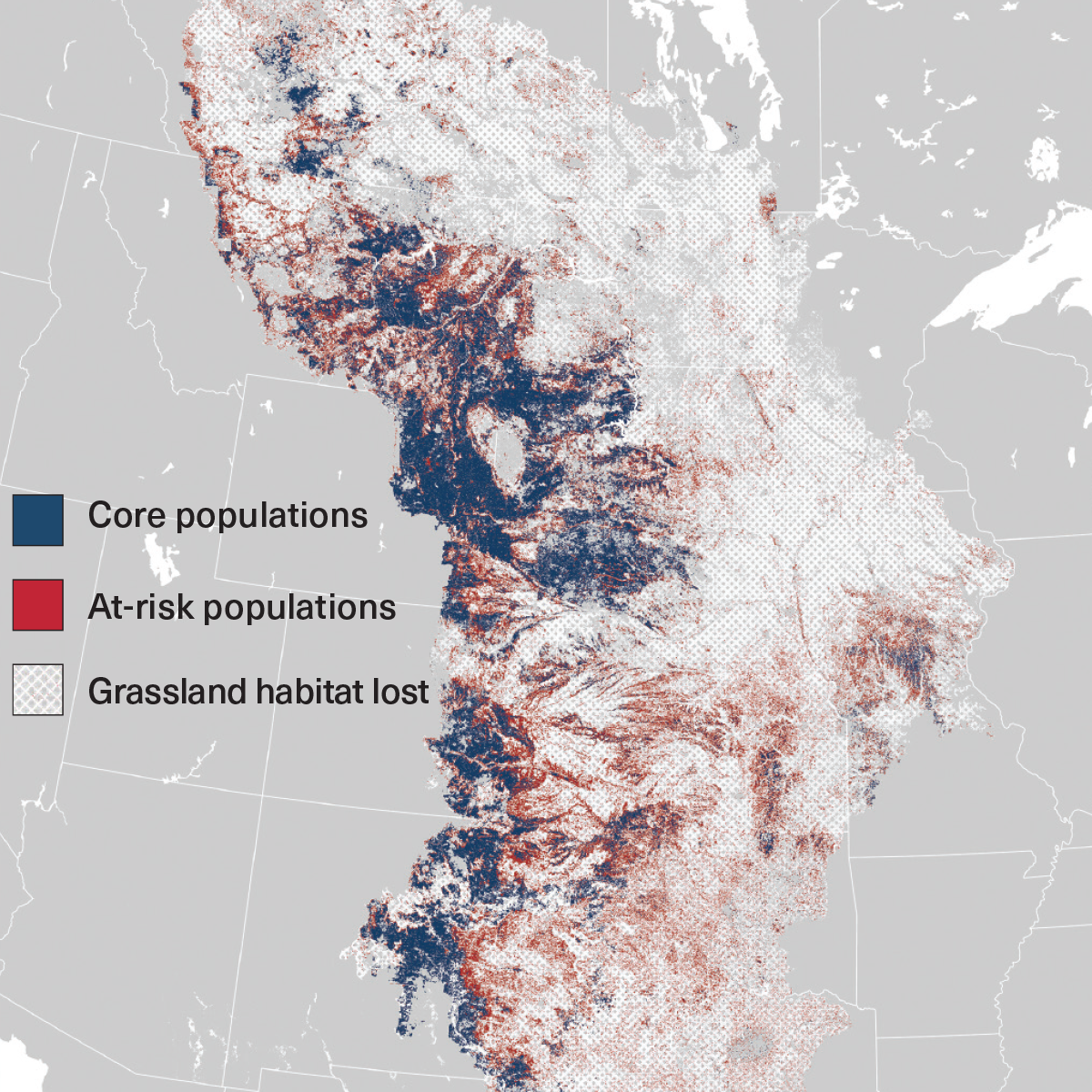Grassland Birds
Incentivizing Habitat Conservation
Status: The biggest bird declines of any habitat
Grassland birds have suffered the biggest bird declines of any terrestrial biome since 1970. The eastern Great Plains are a hotspot of population loss due to habitat conversion, tree and shrub encroachment, and pesticide applications.

- About two-thirds of this group (15 species) have experienced population declines since 1970.
- One-quarter of this group are Tipping Point species, including Mountain Plover, Sprague’s Pipit, Henslow’s Sparrow, Chestnut-collared Longspur, and Bobolink—which are all showing accelerating rates of decline.
- Massive losses of birds can be reversed with voluntary, incentive-based programs powered by partnerships, landowners, and Indigenous Nations to restore grasslands, using the successful North American Wetlands Conservation Act as a model.
Conserving and Growing the Nation’s Grasslands

Grasslands sustain rural economies and livelihoods in America’s Heartland, including the shared heritage with Indigenous peoples. Yet grasslands are America’s most endangered habitat—in the United States, more than 60% of native grasslands have been lost to agricultural conversion and tree encroachment, totaling 360 million acres of habitat loss. Another 125 million acres are at high risk of being lost in the near future.
The Central Grassland Roadmap Initiative is spearheading a collaborative response to this emergency by rallying a diverse conservation community (landowners, state and federal agencies, nonprofit groups, Indigenous Nations, and industry) around a vision that sees hope and opportunity in America’s grasslands.
The Roadmap collaborative combined population trend models for five declining grassland bird species (including Baird’s Sparrow and Chestnut-collared Longspur) with maps of habitat-conversion risk to identify priorities for grassland bird habitat conservation. The map showcases the plight of grasslands across the Great Plains and opportunities to ensure resilient grasslands for birds and people.
